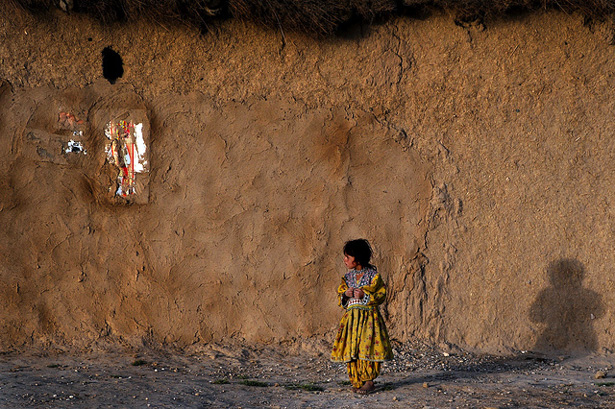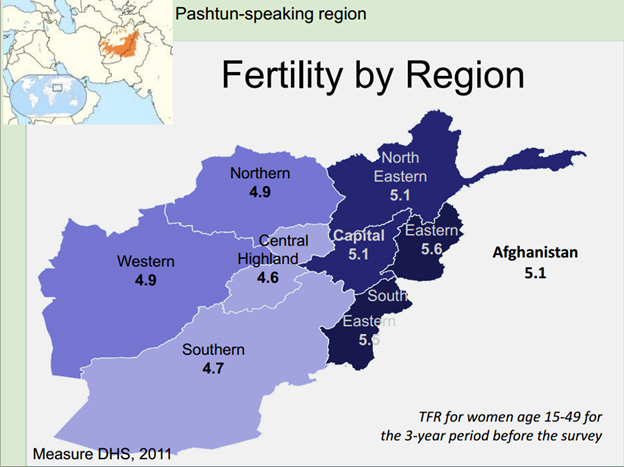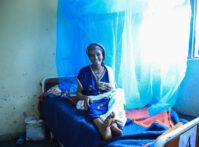-
Afghanistan’s Youth and the Risks of Taliban Return [Part One]
July 25, 2013 By Jacob Glass
As the United States approaches its 2014 deadline for military withdrawal from Afghanistan, one often overshadowed aspect of the conflict is the hard-won progress made by previously marginalized segments of the Afghan population, particularly women, girls, and young people.[Video Below]
Afghanistan has one of the highest proportions of young people in the world – many of whom have known only war. The median age of the population is 15.6 years old, the median age of marriage is 18, and half of mothers surveyed during a country-wide mortality survey had their first child when they were teenagers.
But “while more than 70 percent of Afghanistan’s population are under 25 years of age, young people’s voices are rarely heard,” said Maiwand Rahyab, Counterpart International’s deputy director of Afghanistan.
“Let’s not be naïve about the current reality,” Rahyab said at the Wilson Center. “Afghan society is conservative and hierarchical,” making it difficult for young people to contribute meaningfully to policymaking and government reform. But over the last decade, there have been improvements in schooling, health, and opportunities for young people, which he and other panelists described during a special half-day event on June 24, “Afghanistan Beyond the Headlines: Women, Youth, and the War.”
A New Generation of Engagement
“With all of these challenges, it is easy to believe that it is impossible for youth to mobilize and influence the country’s future,” said Rahyab. “However, I would like to challenge the popular perceptions about Afghanistan,” by showing there is “an emerging generation that is striving to transform a war-torn country into a safer, more secure, and prosperous place to live.”
Two-and-a-half years ago, Rahyab found himself despairing. “My dreams of a peaceful and democratic Afghanistan were fading quickly,” he said:
I was hopeless and was contemplating leaving the country for good. Fortunately, I was engaging on a regular basis with a broad network of young Afghan entrepreneurs, business leaders, civil society activists, and government officials. I eventually realized that I was not alone – that my frustration was shared by many other Afghans. I realized that leaving Afghanistan was not the solution…there was simply too much at stake. I knew at a fundamental level that genuine development in Afghanistan would only be possible if the new generation could collectively advocate for a common vision, values, and goals.
Empowering Afghan youth to advocate for themselves is a crucial investment for the country, said Rahyab, who has since helped organize the Afghan National Youth Policy. Presented to the president in May, the youth policy is a document created with input from more than 500 young people from around the country that outlines legislative strategies to “systematically address” short-, medium-, and long-term youth issues. The goal is “to ensure that investment in young people leads to sustainable and more equitable development of all young women and men,” write the authors.
“Youth movements are changing politics by providing a platform that ties their present and future to a stable and democratic Afghanistan – this is a generation that actively seeks to contribute to their community,” Rahyab said. “This is a sector that has seen tremendous individual and collective maturity over the past decade…becoming more relevant, viable, vocal, and effective.” Some youth organizations have even started refusing international funding to showcase their independence, he said.
Dangerous Demographics?
Historically speaking, Afghanistan’s large proportion of young people – called a “youth bulge” by demographers – presents many challenges to achieving democracy, said the Stimson Center’s Demographer in Residence and ECSP consultant Richard Cincotta.
 Without access to education and livelihood opportunities – goals that become increasingly more difficult with each successive generation of growth –“youthful populations are statistically risky populations, and have a high risk of civil conflict and a low probability of attaining high levels of democracy,” he said.
Without access to education and livelihood opportunities – goals that become increasingly more difficult with each successive generation of growth –“youthful populations are statistically risky populations, and have a high risk of civil conflict and a low probability of attaining high levels of democracy,” he said.According to Cincotta, youthful populations apply significant pressure to job markets that do not have the means to incorporate new workers. Faced with a large percentage of unemployed and dissatisfied young people, elites are more willing to back an authoritarian regime to maintain stability.
However, increasing levels of education for women is one of the strongest drivers of decreased fertility rates, which can put the country on track to turn a youthful population into an advantage through what demographers call the “demographic dividend.” Already there are major differences in the total fertility rate of Afghan women based on education levels (5.3 children per women for those with no education compared to 3.6 for those with a secondary education), said Cincotta. Further, as experience across the world has shown, when women of all education levels are given a choice in the matter, they tend to have fewer children.
The education and engagement of women is therefore central to a more peaceful and democratic Afghanistan, he said.
Gains for Girls – and Boys – Threatened
“Education is the only way,” agreed Razia Jan, founder of Razia’s Ray of Hope Foundation, who joined the panel via webcast from Kabul. But increasing schooling is challenging in a country with poor infrastructure and a weak central government, especially for girls, who face a legacy of strict segregation and exclusion from the education system. Jan’s foundation works to address the right to education in Kabul with a free private school for girls of all ages.
Since 2008, the Zabuli Education Center has grown from 108 girls to more than 400 girls now enrolled in K-9 education. “There has never been a school for girls in this area; no one ever offered them this option,” Jan said. “When I asked a little girl in kindergarten why she was learning English, she said ‘because it is an international language’…that is what I am putting in their minds.”
The school is contributing to a dramatic rise in education opportunities for women across Afghanistan. “There are now seven million girls going to school,” said Jan. “There are girls that have asked their parents, ‘Please wait until I do my 12th grade before I get married,’ and when they graduate they will be 23 years old.” Though the expansion of education and youth engagement are positive signs for Afghanistan, Jan said she was worried about the recent announcement that the United States was talking with the Taliban as part of peace negotiations. “My concern is about the U.S. negotiating with the Taliban directly,” she said, “these are murderers – how can we fight for 12 years and now shake hands with them?”
“I know these people will never do what they say,” she said. “They put acid on girls and cut their throats just for going to school; they blew up vans of girls going to class.”
Rahyab said the majority of Afghans believe negotiating with the Taliban risks undermining many of the hard-fought gains of the last decade. “I can’t emphasize more the importance of education for young men and young women,” he said. “Access to quality and equitable educational opportunities will transform Afghanistan – it already has.”
“You [Americans] have planted a bush…it is just flowering,” urged Jan, “please don’t take it away before it is too late and we cannot go back.”
Event Resources:
Sources: Afghan National Youth Policy, The New York Times, UN Population Division.
Photo Credit: An Afghan girl waits for her father and brothers to return from the market, courtesy of Kenny Holston/U.S. Air Force. Map: Data from MEASURE DHS, arranged by Richard Cincotta. Video: The Zabuli Education Center, courtesy of Madeleine Shaw.
Topics: Afghanistan, Afghanistan Beyond the Headlines, aging, Asia, conflict, democracy and governance, demography, development, Dot-Mom, education, family planning, featured, foreign policy, From the Wilson Center, gender, global health, livelihoods, military, NATO, population, poverty, security, U.S., video, youth
 A Publication of the Stimson Center.
A Publication of the Stimson Center.








